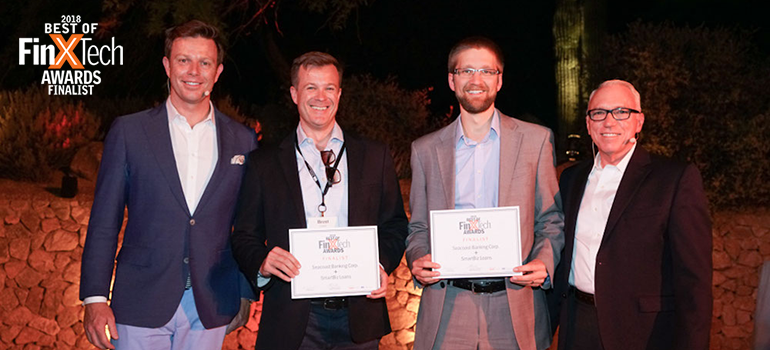
A Community Bank’s Pursuit of Coast-to-Coast SBA Lending
 Traditional processes for underwriting and originating small business loans can be expensive and onerous for the typical financial institution, making it difficult to make these loans profitable. But Stuart, Florida-based Seacoast National Bank—through its partnership with SmartBiz, based in San Francisco—is already experiencing significant growth in SBA loan volume by automating the process and accessing a nationwide pool of prospective customers. In fact, the $5.9 billion asset bank plans to crack the Small Business Administration’s list of the top 100 SBA lenders by the end of this year.
Traditional processes for underwriting and originating small business loans can be expensive and onerous for the typical financial institution, making it difficult to make these loans profitable. But Stuart, Florida-based Seacoast National Bank—through its partnership with SmartBiz, based in San Francisco—is already experiencing significant growth in SBA loan volume by automating the process and accessing a nationwide pool of prospective customers. In fact, the $5.9 billion asset bank plans to crack the Small Business Administration’s list of the top 100 SBA lenders by the end of this year.
It’s hard to argue with the results so far: Data from the SBA reveals the bank’s average number of loan approvals for 2018—43 per quarter as of June 22—are almost equal to the total number of SBA loans the bank approved (46) in all of 2017. Of the 129 SBA loans approved by Seacoast so far this year, almost 100 were generated through SmartBiz, according to the bank. SBA loan volume is at $33.9 million so far for the year—more than double the amount approved by the bank last year.
Seacoast started working with SmartBiz about a year ago, due to its interest in the fintech firm’s ability to provide access to a broad, national base of potential customers, says Julie Kleffel, executive vice president and community banking executive at Seacoast.
Eight banks currently participate in SmartBiz’s loan marketplace. Each bank outlines its credit policies and desired customer criteria with SmartBiz, which allows it to serve as a matchmaker of sorts between customer and lender. “We’re able to send the right borrowers to the right bank,” says SmartBiz CEO Evan Singer. Roughly 90 percent of the customers matched to the company’s partner banks are ultimately approved and funded, which benefits both the customer and the bank, which is less likely to waste time and resources underwriting a loan that it ultimately won’t approve.
Seacoast’s underwriters have the final say on whether the loan is approved, and they close the loan, says Kleffel. The guaranteed portion of the loan is sold on the secondary market, with Seacoast keeping the unguaranteed portion. (Under the SBA 7(a) loan program, the SBA pays off the federally guaranteed portion if the loan defaults.)
Kleffel says the two entities have a “collaborative” relationship and spent time early on learning how the other does business. Together, “we provided a way to better serve both our existing clients as well as new clients [SmartBiz is] introducing us to,” she says.
Seacoast currently ranks 108th on the SBA’s list of top lenders, putting the top 100 within sight. Access to more customers through SmartBiz has contributed to the bank’s SBA loan growth, but a more efficient process means the bank can handle the increased volume. The traditional 30- to 45-day process has been cut to 11 or 12 days, according to Kleffel. Ultimately, the bank would like to approve SBA loans within 10 days of submission.
Singer credits Seacoast for making the most of the partnership. “The leadership at the bank has really embraced innovation, and you can see what they’re doing out in the marketplace to meet customer needs,” he says, adding that the experienced SBA team the bank has in place is another key differentiator.
Seacoast aims to treat these new customers just as well as the customers it would attract more traditionally through its Florida branches. Each new customer receives a call from a Seacoast banker, introducing them to the bank. The same banker “works directly with them all the way through closing and post-closing, so that they’re appropriately brought into the Seacoast family with the same level of care” as any other customer, says Kleffel, with an eye to retaining and growing the relationship.
Seacoast has accomplished this growth without hiring new staff. SBA loan origination is currently supported by just five employees, including a department manager. Supporting that level of loan volume and growth would require double that without SmartBiz on board. The partnership, Kleffel says, “has allowed us to pull through more revenue, faster, with [fewer] people and a better customer experience.”



